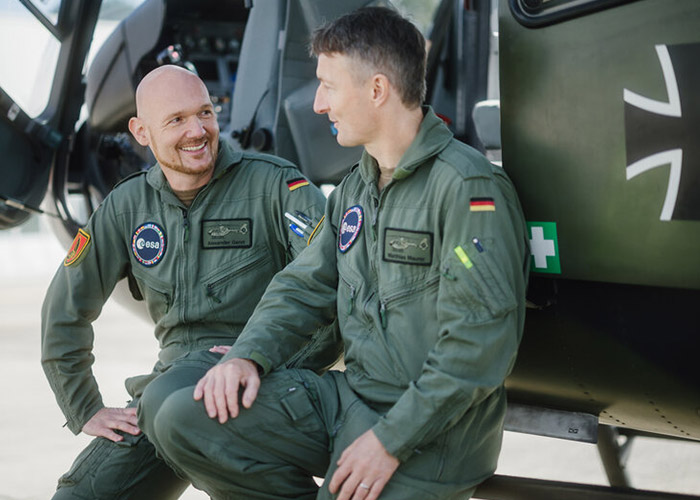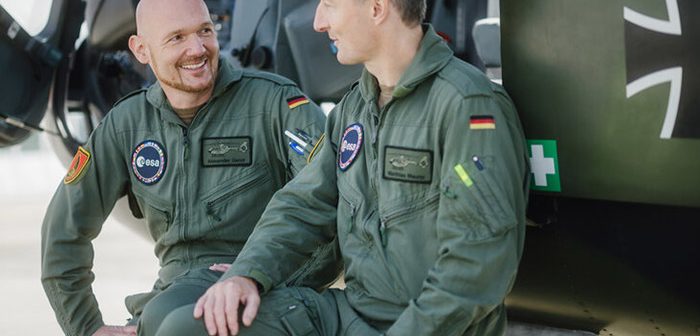
Four ESA astronauts have completed a helicopter training course with the German Bundeswehr, Germany’s federal defence forces, marking a key milestone in Europe’s preparations for future missions to the Moon and operations on the lunar surface.
ESA astronauts Alexander Gerst, Matthias Maurer, Samantha Cristoforetti and Thomas Pesquet participated in a three-week training programme at the International Helicopter Training Centre in Bückeburg, Germany. The course included one week of simulator instruction followed by two weeks of practical flying in EC135 helicopters, with operations conducted over central Germany and in mountainous terrain in the German Alps. Alexander and Matthias began the course in mid-September, with Samantha and Thomas joining at the beginning of October. The group formally graduated from the training today.
Helicopter training offers a realistic analogue for the dynamics of planetary landings, requiring capabilities such as vertical take-off and landing, terrain-based decision-making, and high levels of coordination and situational awareness. These skills are essential for future human spaceflight missions, including lunar landings, where astronauts will descend to the surface using a human landing system and later launch back to orbit. Helicopter manoeuvres closely mirror these mission phases, helping astronauts build proficiency in environments that demand precision and adaptability.
“Space exploration is one of Europe’s most ambitious endeavours and this collaboration with the Bundeswehr is a prime example of how ESA is preparing its astronauts for the realities of lunar exploration. With projects like Argonaut, our Terrae Novae programme, and this hands-on training, we’re building the skills and readiness to keep Europe and our astronauts at the forefront of future space exploration missions,” says Daniel Neuenschwander, ESA Director of Human and Robotic Exploration.
The programme reflects ESA’s commitment to international cooperation and astronaut readiness for future lunar surface operations. Completion of this training also qualifies ESA astronauts for advanced helicopter training in the US. All ESA astronauts are expected to complete similar training as part of a broader initiative to equip European crews with the skills required for lunar surface operations.
“We’ve received a very dense helicopter training course from the German Army, focusing on flying challenging approaches and landings in difficult terrain. It was fascinating to get to a capability level that allowed us to land on the icy ridges of the German Alps within only three weeks, showing the high skill level of our Bundeswehr instructors. Making use of their expertise is essential for our future steps of Moon exploration,” says Alexander Gerst.
“At ESA’s LUNA facility, we simulate lunar surface operations in great detail, once we have reached the surface. But first we have to get there. Nothing replaces the real-world complexity of vertical flight. This helicopter training complements our surface analogue work perfectly and helps us prepare for the real thing, enriching the European expertise in human space flight operations significantly,” says Matthias Maurer.
“This training is a great opportunity to train in a real operational environment and acquire new skills in vertical flight and landing—something necessary to operate lunar landers. It’s great to see once again how military aviation expertise can support space exploration,” says Samantha Cristoforetti.
“As a pilot, I’m used to flying fixed-wing aircraft, where the dynamics of take-off and landing are very different. Helicopter flying requires a whole new level of precision and spatial awareness—especially in confined or uneven terrain. It’s an excellent analogue for future Moon missions,” says Thomas Pesquet.
Image: Alexander Gerst and Matthias Maurer during their helicopter training Credit: ESA – Bundeswehr/J. Neumann





